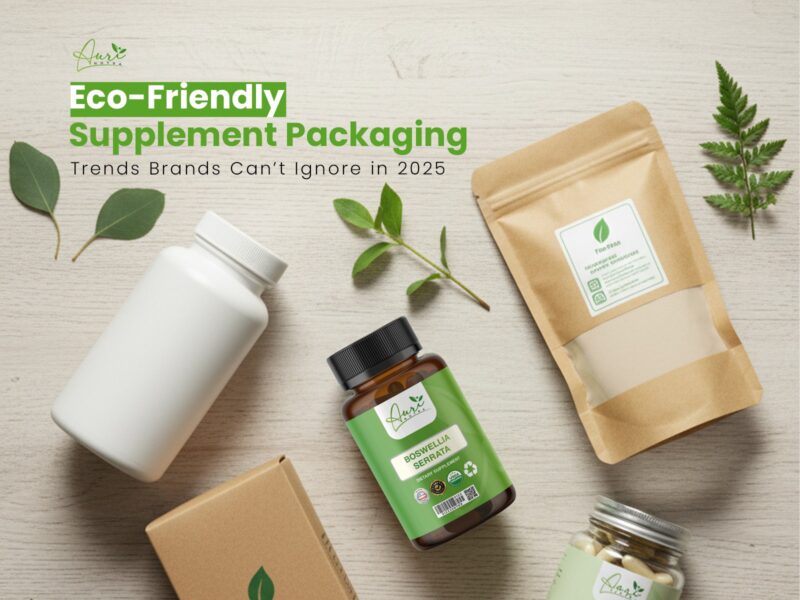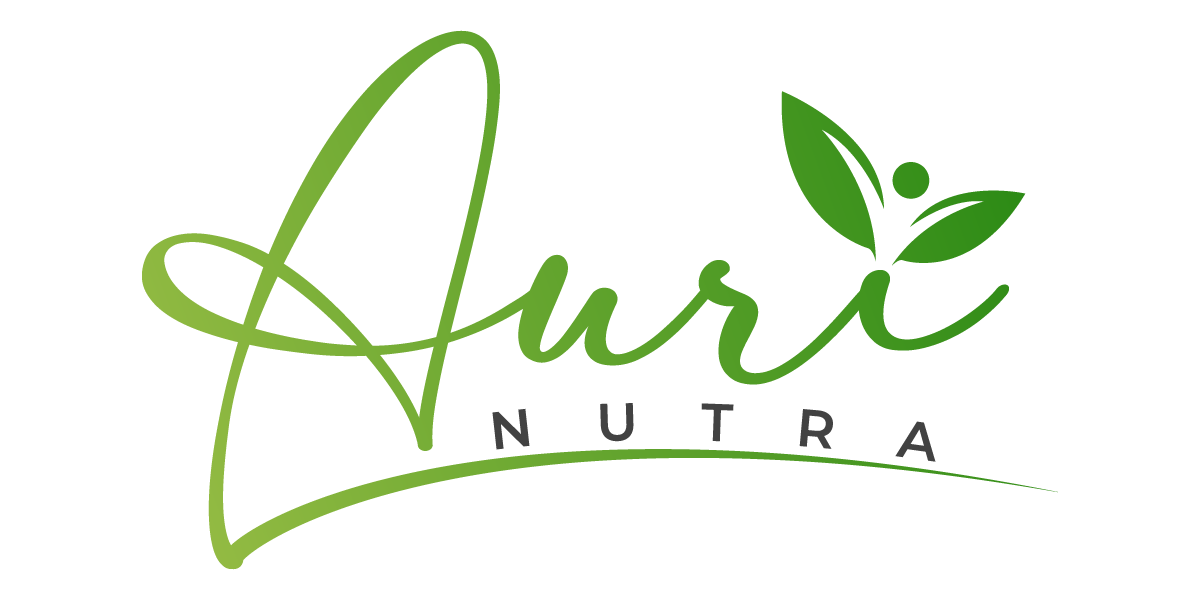
Introduction — Why Eco-Friendly Supplement Packaging Matters in 2025
Eco Packaging Trends 2025
One of the most important packaging shifts in 2025 is eco-friendly supplement packaging that goes beyond being “greenwashing.” Brands that once used recyclable labels now face pressure to deliver biodegradable supplement bottles, plastic-free supplement containers, and compostable pill bottles.
Based on industry research, three clear trends dominate:
- Material innovation: Corn-based polymers, hemp fiber, and algae plastics.
- Minimalist design: Less ink, smaller labels, and reduced secondary packaging.
- Smart eco packaging: QR codes linking to sustainability reports.
Why it matters: Staying ahead of eco packaging trends 2025 isn’t just about compliance—it’s about market positioning. Retail buyers now ask: “How sustainable is your packaging?” If your answer isn’t convincing, your competitor wins the shelf space.
Rising Consumer Demand for Sustainable Supplement Packaging
The consumer shift is undeniable. Surveys in 2025 show 70% of supplement buyers prefer recyclable packaging for nutraceuticals over traditional plastic. More importantly, younger demographics view eco packaging as proof of brand authenticity.
From our experience working with startups at Aurinutra Inc., eco packaging improves:
- Conversion rates: Customers reward sustainable brands with higher loyalty
- Market entry: Retailers are more willing to onboard eco-conscious products.
Key consumer-driven packaging attributes include:
- Plant-based or vegan supplement containers.
- Clearly labeled eco-friendly vitamin packaging certifications.
- Lightweight designs that reduce shipping emissions.
👉 See our: sustainable nutraceutical packaging services
Impact of Regulations and Compliance Standards (FDA, EU, NSF)
Compliance is tightening. The FDA now reviews packaging claims more closely, while EU directives set mandatory recycling thresholds. NSF and GMP certifications increasingly include packaging audits.
Industry best practices suggest:
- Always validate material claims (e.g., compostable pill bottles need ASTM D6400 certification).
- Use FDA-compliant labeling that doesn’t mislead eco claims.
- Prepare for retailer audits requiring sustainability reporting.
The bottom line: non-compliant packaging risks fines, product recalls, and reputational damage.
👉 See our: sustainability and regulatory certifications
Plastic-Free Supplement Containers
Plastic-free doesn’t mean weak or impractical anymore. Thanks to new composites, plastic-free supplement containers can now handle moisture-sensitive powders and capsules without compromising shelf life.
Options brands are adopting include:
- Paper-based tubs with barrier coatings.
- Glass jars for premium positioning.
- Compostable pouches for powders and gummies.
Transitioning away from petroleum plastics not only satisfies eco-conscious buyers but also helps brands reduce exposure to upcoming plastic taxes in states like New York.
Key Eco-Friendly Supplement Packaging Materials in 2025
Biodegradable Supplement Bottles and Jars
Biodegradable bottles have moved from niche to mainstream. Brands leverage cornstarch-based PLA plastics or hemp-fiber blends for capsules and tablets. These bottles break down under industrial compost conditions, reducing landfill impact.
Benefits for brands include:
- Strong eco-marketing angle (“biodegradable supplement bottles”).
- Retail acceptance in eco-focused outlets.
- Alignment with global zero-waste goals.
Challenges: Higher costs and limited shelf-life vs. PET plastics. However, for premium supplements, this trade-off is becoming a selling point.
Recyclable Vitamin Packaging (Blister Packs, Pouches, Cartons)
Recyclable packaging remains the most scalable option. Think aluminum foil blister packs, mono-material pouches, and cardboard cartons.
Why it works:
- Widely accepted in recycling streams.
- Compatible with existing manufacturing equipment.
- Lower cost vs. biodegradable options.
Pro tip: Ensure your recyclable packaging for nutraceuticals carries clear recycling codes. Many consumers won’t recycle if instructions are unclear.
👉 You Can See our: 🌱 biodegradable & recyclable supplement labels
Plastic-Free Packaging Options for Supplements
Plastic-free goes hand-in-hand with brand differentiation. Beyond bottles, innovations now cover:
- Compostable pill bottles using sugarcane waste.
- Refill pouches with water-soluble films.
- Glass jars with aluminum lids.
Industry best practices suggest small-batch brands use glass or paperboard, while large-scale manufacturers scale with refill systems.
Vegan & Plant-Based Supplement Packaging Alternatives
Consumers want packaging that aligns with their lifestyle choices. Vegan packaging excludes animal-derived adhesives or inks. Plant-based alternatives include:
- Soy-based inks.
- Hemp-fiber cartons.
- Mushroom-based foam inserts for shipping.
This is a growing niche—perfect for brands targeting holistic health consumers.
Supplement Packaging Trends Shaping the Industry in 2025
AI-Driven Packaging Design & Personalization
AI is shaping design by optimizing packaging for cost, weight, and sustainability. Supplement brands now test 3D digital twins of their packaging before production.
Voice-search trends also demand QR-enabled packaging that can answer:
- “Is this bottle recyclable?”
- “What certifications does this supplement have?”
Smart Labels, QR Codes, and Transparency Features
Transparency is critical. Consumers scan QR codes to view sourcing, carbon footprint, and certifications. By 2025, eco-friendly vitamin packaging without traceability risks being ignored.
Eco-Friendly Packaging Innovations in Powders, Gummies, and Capsules
Each dosage form has unique eco challenges:
- Powders: Compostable stand-up pouches.
- Gummies: Biodegradable jars with moisture barriers.
- Capsules: Recyclable blister packs.
Sustainable Packaging Cost vs. Consumer Willingness to Pay
The good news? Surveys show 60% of supplement consumers will pay 5–10% more for eco packaging. This creates room for premium positioning while covering costs.
Certifications & Standards for Eco-Friendly Supplement Packaging
FDA & GMP Requirements for Sustainable Materials
FDA and GMP compliance ensures packaging safety. Supplement brands must test for leachability, moisture resistance, and label accuracy. FDA-compliant sustainable packaging protects both the environment and consumer trust.
Organic, Non-GMO, and Vegan Packaging Certifications
Third-party certifications like USDA Organic and Non-GMO Project now extend credibility to packaging. Brands are also adopting vegan certification for inks and adhesives.
Sustainability Reporting & Eco Labels Consumers Trust
Eco labels (e.g., FSC, Green Seal) provide third-party validation. Best practice: include a digital link to sustainability reporting, building transparency and E-E-A-T trust.
Comparing Eco Packaging Options: What Brands Must Consider
Biodegradable vs. Recyclable vs. Plastic-Free Packaging
- Biodegradable: Great marketing, but higher costs.
- Recyclable: Cost-effective, widely scalable.
- Plastic-free: Strong eco-positioning, limited scalability.
Small Batch vs. Large Scale Eco Packaging Costs
Entry-level brands often start with glass or paper. Larger brands can invest in custom biodegradable molds. Scaling reduces per-unit costs dramatically.
Local vs. Overseas Manufacturers for Sustainable Packaging
Local suppliers (e.g., New York-based) ensure compliance and faster timelines, while overseas offers lower costs but higher compliance risks.
👉 See We always maintain: ✅ supplement compliance & certification standards
How to Transition Your Supplement Brand to Eco-Friendly Packaging
Steps to Evaluate Current Packaging Footprint
- Audit material composition.
- Measure recyclability or compostability.
- Identify cost-saving eco swaps.
Choosing the Right Material for Your Dosage Form
- Capsules: Blister packs.
- Powders: Compostable pouches.
- Gummies: Glass or biodegradable jars.
Partnering with FDA-Compliant Eco-Friendly Supplement Manufacturers
Manufacturers like Aurinutra Inc. in NYC provide 🏭 turnkey supplement manufacturing & fulfillment solutions: R&D, eco packaging sourcing, and compliance. Choosing such a partner ensures scalability and trust.
Avoiding Greenwashing: How to Prove Sustainability Claims
Best practices include third-party certifications, transparent sourcing, and publishing measurable sustainability KPIs.
Future Outlook — Eco-Friendly Packaging Beyond 2025
Predicted Market Growth & Consumer Expectations
Analysts forecast the global eco supplement packaging market will grow 12% annually through 2030, driven by consumer and regulatory demand.
The Role of AI, AR, and Smart Packaging in Supplements
Future packaging will integrate AR experiences—consumers scanning labels for product authenticity, eco claims, and even refill reminders.
How Sustainability Will Shape Supplement Branding Long-Term
Sustainability will move from “marketing tactic” to “default expectation.” Brands that lag risk exclusion from premium retailers and health-conscious buyers.
Conclusion — Why 2025 Is the Tipping Point for Eco-Friendly Supplement Packaging
Eco packaging is no longer optional—it’s the standard. Brands that adopt biodegradable supplement bottles, recyclable cartons, or plastic-free supplement containers gain compliance, trust, and long-term growth. Partnering with FDA-compliant supplement manufacturers like Aurinutra Inc. ensures a smooth transition. 2025 is the year to act.
FAQs on Eco-Friendly Supplement Packaging
Q. What is the most sustainable packaging for supplements in 2025?
Answer: Compostable pill bottles and recyclable mono-material pouches are leading choices.
Q. Are biodegradable pill bottles FDA-approved?
Answer: Yes, if tested for safety, stability, and compliance with FDA packaging requirements.
Q. How much does eco-friendly supplement packaging cost compared to plastic?
Answer: Typically 5–15% more per unit, depending on material and order volume.
Q. Can small supplement brands afford eco packaging in 2025?
Answer: Yes—glass jars, paperboard cartons, and small-batch biodegradable jars offer affordable entry points.
